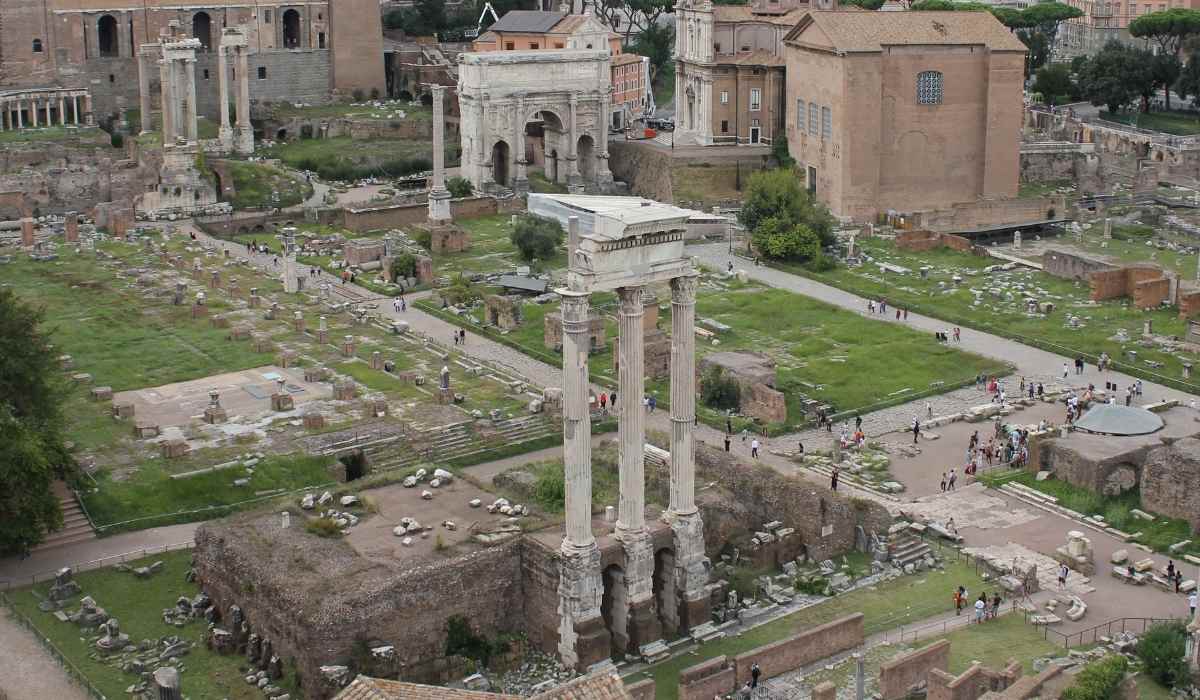
The Via Sacra In Rome: History & Places Every Tourist Want to See
The Via Sacra used to be the main road in Ancient Rome. Translating into English as the Sacred Way Rome, it was the centre of commercial and everyday life in the city.
In this guide, we will explore its interesting history and uncover the comings and goings down the Via Sacra in Roman times. Let’s get started.
Contents
- 1 The Via Sacra in Roman Times History
- 2 What Is The Via Sacra and What Does It Mean?
- 3 What Was The Via Sacra Used For?
- 4 What to See Along The Sacred Way
- 5 3 Lesser-known Facts about The Via Sacra
- 6 What’s The Oldest Section of The Via Sacra?
- 7 Get Your Bearings with the Via Sacra Rome Map
- 8 Nicest Hotels Near Via Sacra Forum Romanum
- 9 Frequently Asked Questions about the Via Sacra
- 10 Conclusion
The Via Sacra in Roman Times History
When you are wandering around the sights of the Roman Forum or the Colosseum, you are surrounded by historical monuments and ruins. But don’t forget to look beneath your feet! You may be walking along the Via Sacra – the Roman Empire’s oldest road!
The Via Sacra Forum Romanum route – which runs from the Colosseum to the Capitoline Hill – was supposedly used from the 5th century B.C. Originally constructed to facilitate the route of any Roman Triumph (more on that later) it was covered very early on to protect the track from rain.
As ancient Roman civilization progressed, the road was paved in a way that became common to many Roman roads across Europe and North Africa. Eventually, grand columns were installed during Nero’s reign.
What Is The Via Sacra and What Does It Mean?
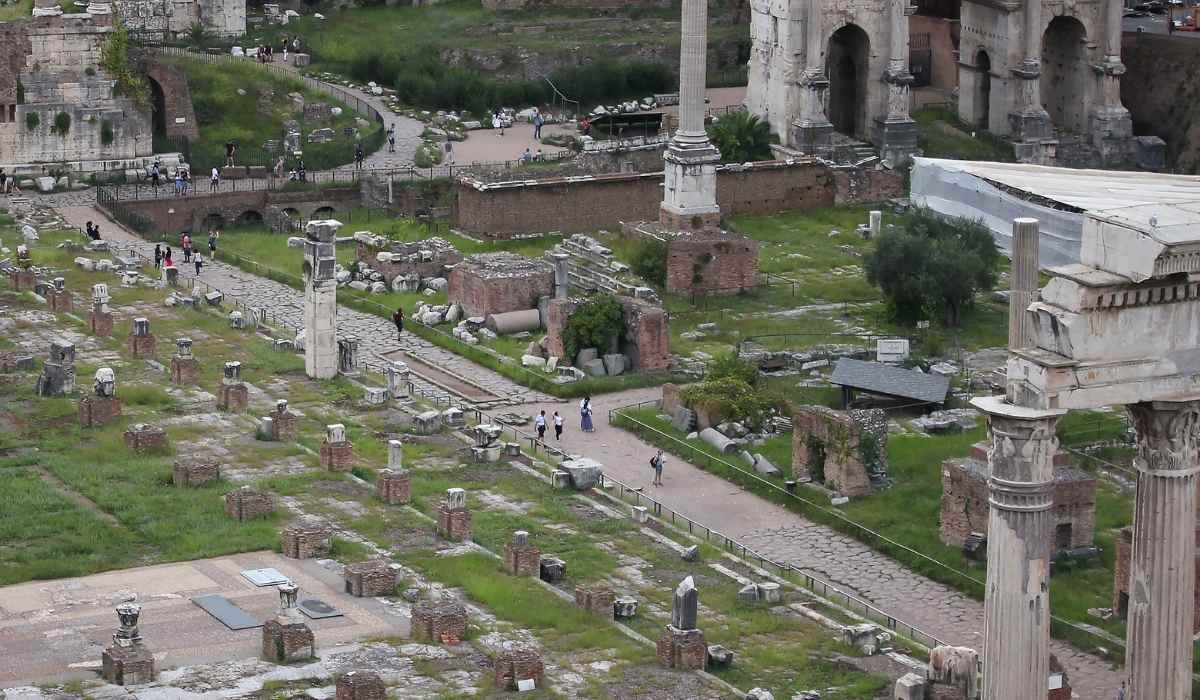
The Via Sacra means “Sacred Way” in English. The name stems from its course through some of ancient Rome’s holiest sites.
As visitors made their way to the Colosseum from the Capitoline, they would pass through or beside Roman temples – including the second-century Temple of Venus and Rome. The Temple of Vestals is also found along this route, as is the home for the Vestal Virgins.
What Was The Via Sacra Used For?
The Via Sacra was a key feature in several aspects of ancient Roman life.
The Roman Triumph
This was a custom undertaken during ancient Rome following a victory in battle.
The victor would be sanctified in a religious ceremony and would offer sacrifices to the god Jupitor at Jupitor’s Temple on the Capitoline Hill. The processions gradually became more extravagant over time, but usually always followed the same format.
The victorious emperor would parade through the streets of the city dressed in honorary robes and a crown. Worshipped as a near deity, the procession would include those captured during the battle, as well as any treasures or spoils.
Once the journey along the Via Sacra had ended at the Capitoline, the crowds would head off to huge feasts, games and celebrations.
General Route for Citizens
The road would often be busy with locals moving from place to place and going about their daily business. A popular pastime was gathering together to throw dice, and many of the locations to partake in this activity were along the route.
Those walking to the courts or conducting political business would also use the road. Because of the crowds, the road also became a popular location along which prostitutes would gather.
Funeral Processions
Eventually, the route was also incorporated into the funeral processions of the emperors.
Their bodies would be dressed and carried along the Via Sacra and into the Roman Forum. Here, funeral rites would be read before the ceremony moved on to the Campus Martius.
What to See Along The Sacred Way
There are so many sites along the Via Sacra!
Here are the main ones.
- The Colosseum: The Colosseum marks the end of the Via Sacra, and is one of Rome’s most famous landmarks. If you only have time for one trip when in Rome then make sure it is a visit to the Colosseum!
- The Arch of Titus Via Sacra Rome. The arch is located at the bottom of the Palatine Hill. Check out the history of this important triumphal arch here.
- The Temple of Vestals: An interesting place, the temple was guarded by the Vestal Virgins who were tasked with keeping it safe in order to guarantee the city’s protection.
- The Roman Forum – or theVia Sacra Forum Romanum – was a very important site in the political, cultural and economic lives of the citizens.
- Other religious sites: The Temple of Venus and Rome, the Temple of Caesar and the Temple of Saturn can all be found along this famous route.
3 Lesser-known Facts about The Via Sacra
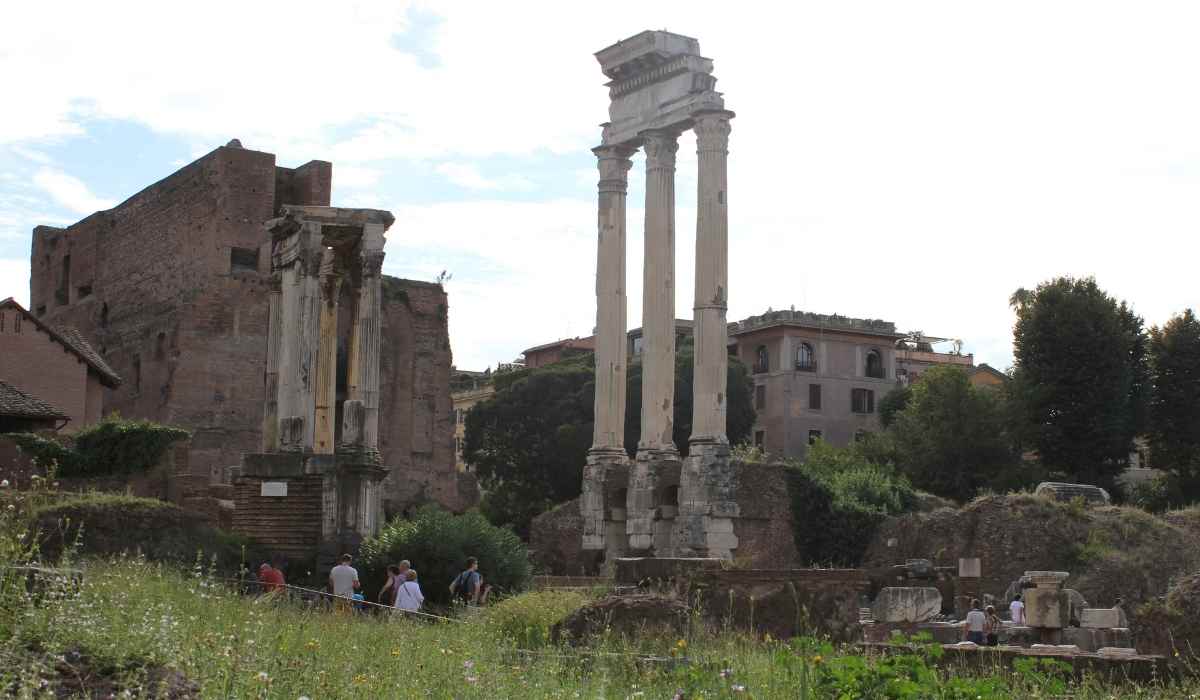
- Despite the name – the Sacred Way – the road was not immune to many sins! Prostitute lined the road, looking for business
- The Via Sacra was not just a processional road, or thoroughfare between sites of political or religious importance. It was also lined with the homes of the richest citizens of Rome.
- The Via Sacra changed over time. After the Great Fire of Rome in 64AD, Nero had the route diverted at the eastern part to go through the Arch of Titus.
What’s The Oldest Section of The Via Sacra?
The road was not constructed all in one go, and as we have just learned, some of it was redirected after the fire in 64AD.
The oldest section however is believed to be around the Domus Publica, which was the home of whoever was guarding and overseeing the Vestal Virgins.
Get Your Bearings with the Via Sacra Rome Map
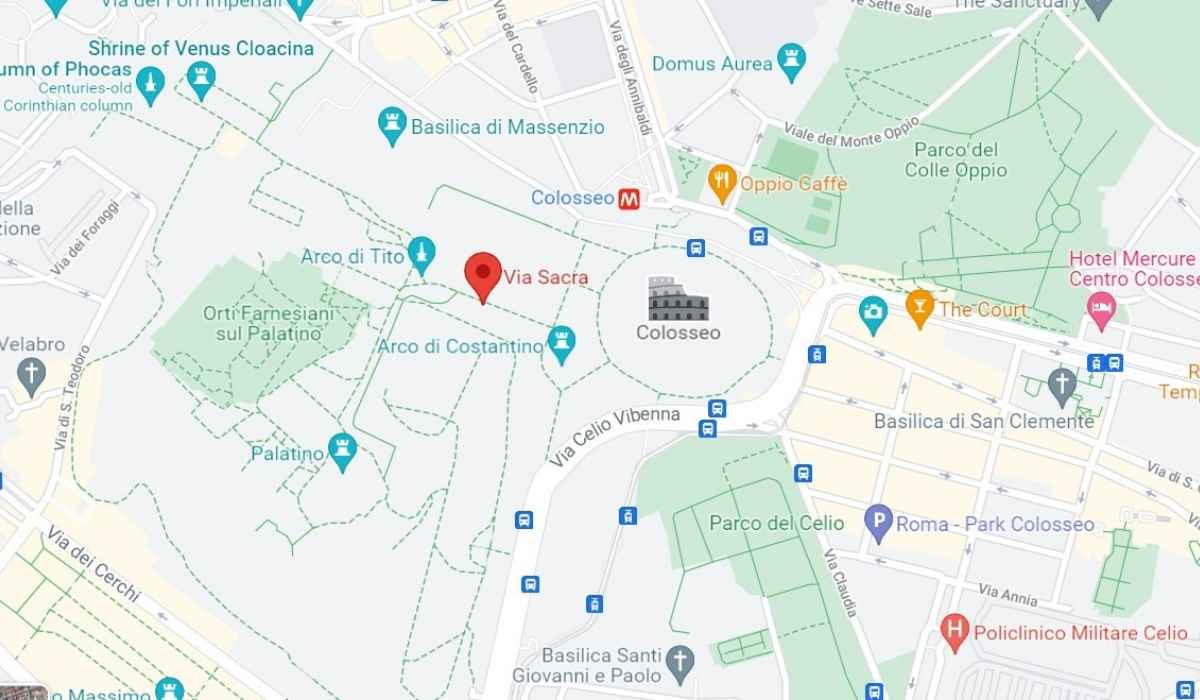
Here you can see all of the key sights along the Via Sacra. Make sure you hit off a few of them during your visit!
Tip – Considering the importance of the road, you may want to hire a tour guide so that you don’t miss any important information.
Nicest Hotels Near Via Sacra Forum Romanum
You will be spoiled for choice in Rome for nice hotels.
Here is our selection of the most charming places to stay near the Forum Romanum.
La Casa Di Romolo, Rome
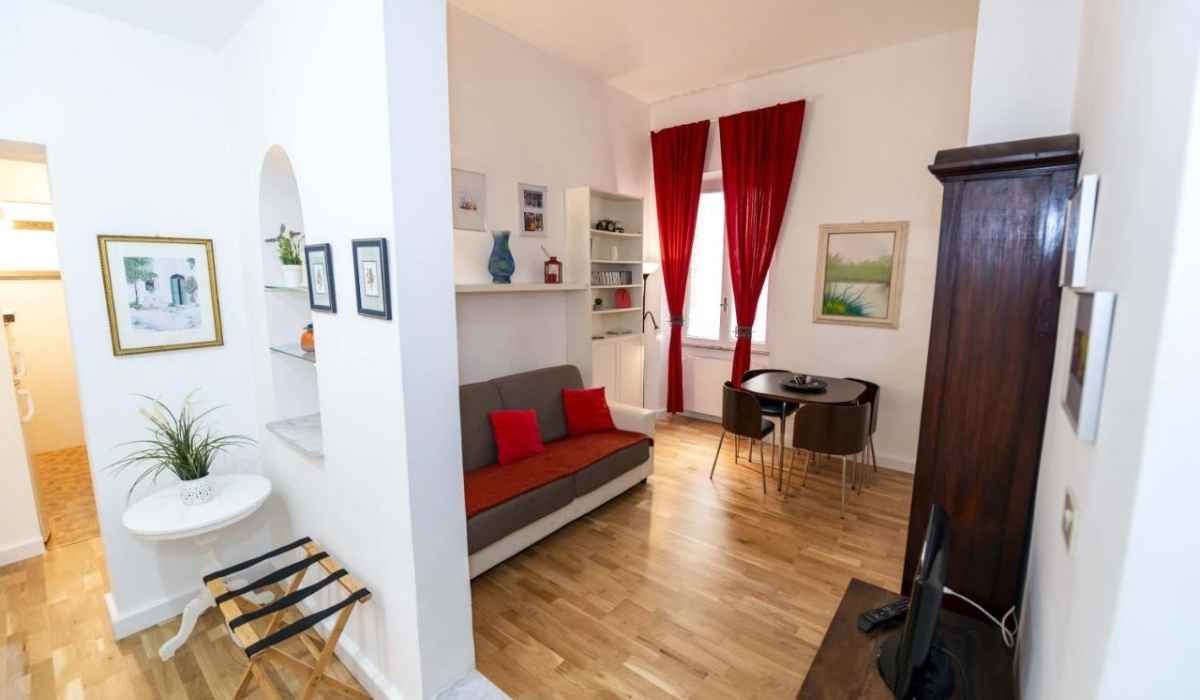
This private apartment is located just 200 metres from the Roman Forum and the Via Sacra. Costing just €130 a night, it offers a simple and clean one bed apartment right in the heart of a historic area. There is also a sofa bed in the living room, so it could sleep four for around €160.
The Hotel Forum
This is one of the closest hotels to the Roman Forum. It boasts rooms with a grand and traditional decor, as well as stunning views from the roof terrace. A double room here with a good breakfast will cost €250 for 2 people in the spring.
Frequently Asked Questions about the Via Sacra

Is the Via Sacra still used?
The Via Sacra is now a tourist site and can be seen as part of a tour of the Roman Forum and the Colosseum.
What is the Via Sacra made out of?
The Via Sacra is made of cobblestone.
When was the Via Sacra built?
The route is thought to have been used since the 5th century BC.
Who built the Via Sacra?
No one person built the Via Sacra as it was constructed over time. For example, after the fire in 64AD, Nero had part of it diverted and straightened out.
Conclusion
Make sure to look beneath your feet if you are visiting the Roman Forum! The Via Sacra in Roman times was of extreme importance. If you are booking a guided tour in Rome, don’t forget to ask about it!
Fanny, an ardent admirer of ancient history and architecture, has been fascinated by the Colosseum since her first visit to Rome in 2012. As a key contributor to the Visit Colosseum Rome blog, she brings her passion for the Roman Empire’s monumental legacy to every article and guide.
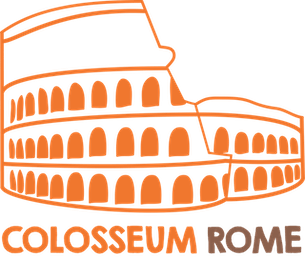
I loved reading your article